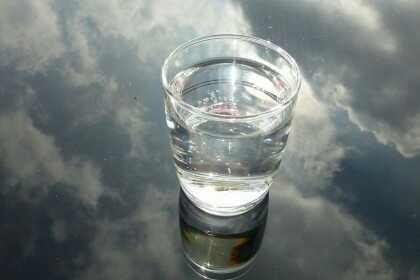
Many people think that thirst is simple enough to overcome. Take water, drink it, and finish it already. But actually there is a rather deep process when we drink, especially when the throat feels so dry, for example after running in the middle of a hot day, so it feels so refreshing when drinking.
Events solve thirst, it turns out through quite complex processes that we must know clearly. Because our bodies can be not-really get water with good capacity.
1. At least takes 10 - 15 minutes more for water that we swallow into the blood

When we are thirsty, there is little water in our blood and nerve cells in the brain send commands that it is time to seek water. Then, once we drink, the immediate sense of satisfaction is felt. But that is precisely mysterious. Because we do not pour water into the bloodstream at all, it will take at least 10 or 15 minutes, maybe longer.
A group of neurologists at the California Institute of Technology have examined a small corner of the problem. Focusing on how the brain tracks what the body drinks, they make mice an object to identify a set of neurons that receive messages when a mouse swallows water.
Yuki Oka, a professor from Caltech in his paper on the page nature.com (international journal) on February 28 yesterday said that in recent years biologists have mapped the neurons in the area of the brain that regulates thirst. Once observed, the cells in the area become calm, after the animals drink water, but it is unclear why.
Passing through the nerve center of thirst, these messages seem to be behind the sensation of satisfaction that comes quickly after drinking, which illustrates not only what is drunk, but how water is swallowed, and is brain-induced. The way this work is considered has the potential to be an important reference neuroscience to understand similar things in humans.
2. Fresh sensation (relief) comes from nerve cells of the brain, has nothing to do with the intake received by the body

Vineet Augustine, a graduate student from Dr. Oka's Laboratory, also conducted a series of experiments with genetically modified mice to trace connections between their nerve cells more easily. In this experiment, one part of the nerve causes the other nerve cells to stop activating, it leaves a mark through its brain in the form of traces of bread crumbs.
What Augustine discovered concluded that some nerve cells in the region called the median preoptic nucleus are responsible for telling other cells in the center of thirst consciousness that drinking activity is taking place.
Further experiments show that rats without the nerve cell version functioned as before, drank twice as much from normal mice. In the opposite scenario, when cells are activated artificially, causing dehydrated mice do not experience thirst.
Interestingly, according to Augustine, what these cells respond to is not the presence of water itself. The researchers found that letting a rat take a lot of water will trigger nerve cells to act. But not in giving him water in the form of gel, which must be chewed before it can be swallowed. Also not when the water with a small gulp in a short duration (2 seconds), although with the same amount of water. So the conclusion, giving oil to mice to drink, just the same effect on their nerve cells when receiving water intake.
3. Not how much the amount of water, but how quickly and the swallowing (swallowing) pattern is received by the nerves
According to Augustine, apparently drinking water with large gulps in demand with rapid duration, can be a signal that there is enough water received by the body.
Sometimes the process is not as simple as those with a syndrome called polydipsia, which, whenever they feel thirsty for drinking large quantities of water. It can be harmful to health, because if the blood is diluted too much, a person may experience hyperhydration (a condition of water intoxication that disrupts the electrolyte balance).
In addition to the dangers of water intoxication, there are good reasons to drink only in the required amount. When researching an animal lowers its head to drink, Dr. Oka speculates, this is in a very vulnerable position. "If you speed up the process of gulping or swallowing, it will increase the risk," he said.
Researchers are now hoping to investigate other ways the body is monitoring water intake. For example, they want to see if there is a sensor in the intestine that makes the brain know the arrival of water. Although it is unclear how to understand the size or capacity of water the body needs, at least we can adjust it by paying attention to our drinking, which is related to the duration and magnitude of the gulp.
You got a 2.66% upvote from @nado.bot courtesy of @rikyharun!
Send at least 0.1 SBD to participate in bid and get upvote of 0%-100% with full voting power.